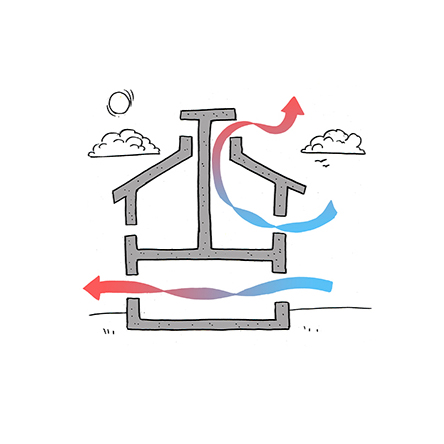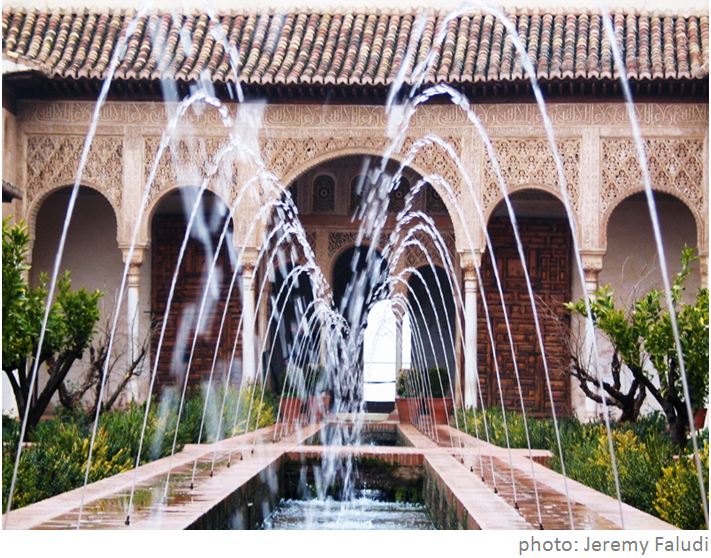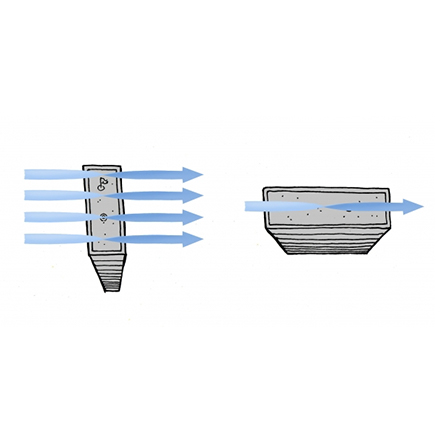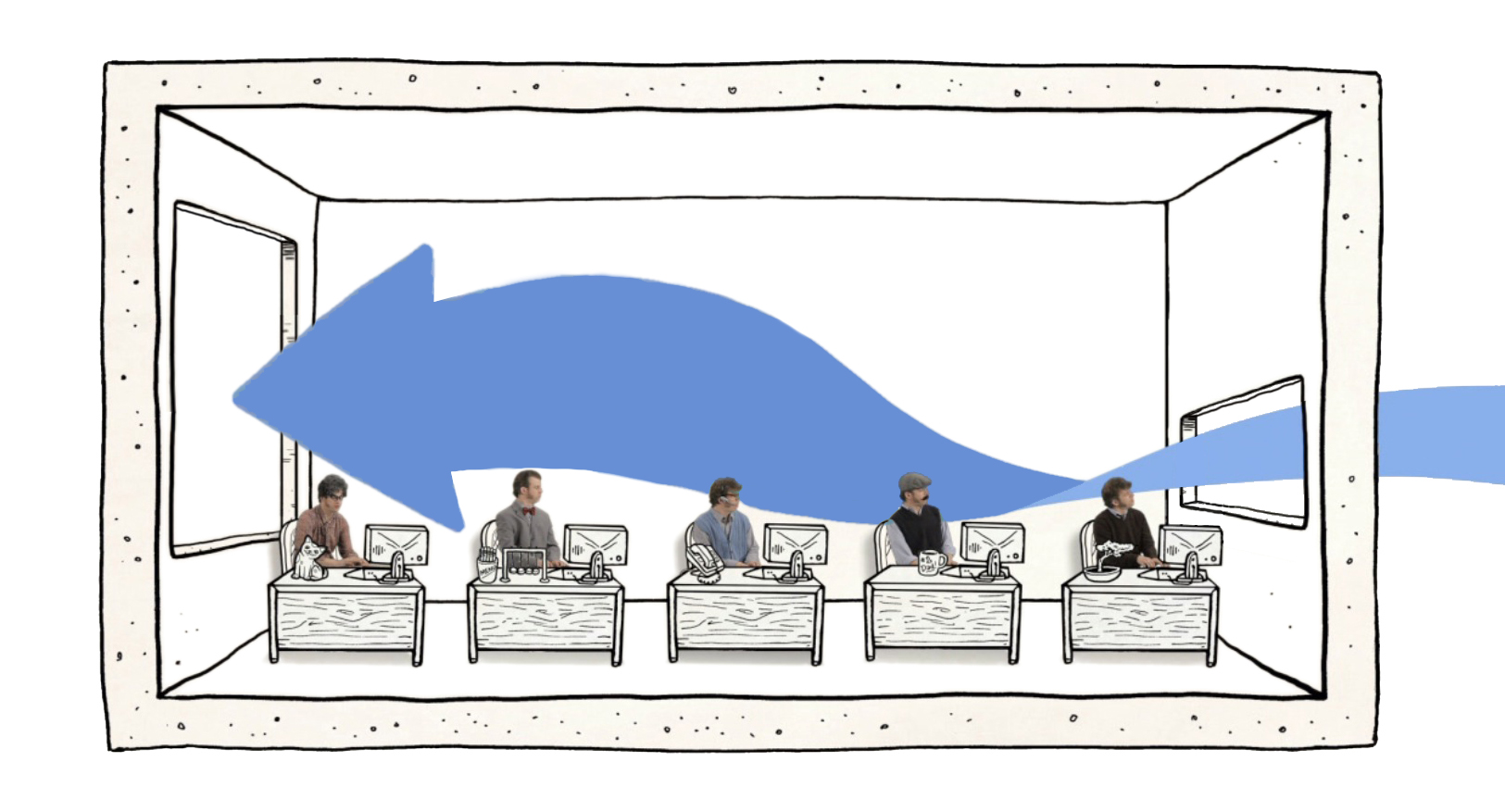You are here
Passive Cooling
Just like passive heating, cooling your building using passive strategies is important for reducing energy usage in your building. Specifically, utilizing passive cooling strategies like natural ventilation, air cooling, and shades can reduce your demand for mechanical cooling while maintaining thermal comfort.
For more information on shading design, see the Shading Design page in the building envelope section.
Dive Deeper
Natural Ventilation
Natural ventilation, also called passive ventilation, uses natural outside air movement and pressure differences to both passively cool and ventilate a building. It can include design strategies like wind ventilation, the stack effect, and night purge ventilation.Air Cooling
Natural ventilation can still be an option even in hot climates, particularly in hot dry climates. Two techniques can be used to cool incoming air: Evaporative cooling and geothermal cooling.Massing & Orientation for Cooling
Massing and orientation are important design factors to consider for passive cooling. Consider these factors early in the design so that the building layout and building orientation can all be optimized for passive comfort.Apertures for Cooling
The simple act of opening a window can often provide immediate cooling effects. But how do the size and placement of that window impact the effect you feel? Window design and ventilation louver design greatly affects passive cooling potential, specifically natural ventilation.Comments





